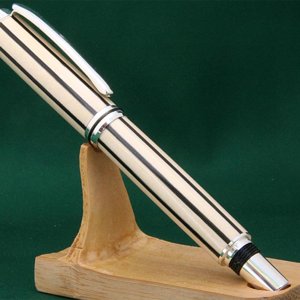Tell that to car manufacturers who have been attaching rear view mirrors to smooth glass and they are still attached in junk yards 50 years later. It was rocket science 50 to 60 years ago, but not now. You don't have to sand glass to make CA glue (or specific versions of epoxy) stick. And wood has pores and fibers even if smooth as glass, so it should hold even better.
It never made sense to me 15 years ago when people said it had to be sanded to stick properly - I didn't have problems then. Plus, I am not a rocket scientist. Maybe it is just some people's techniques.
Disagreements are OK, but when one says it doesn't work - when in fact it does or can . . .
13 - 14 years ago: Segmented, plastic and holly with epoxy, turned, drilled after turning (IIRC) tube inserted with epoxy, no roughing needed; still holding together, in CA with my sister:
Imported Photo from leehljp. Please edit title and description.
www.penturners.org

